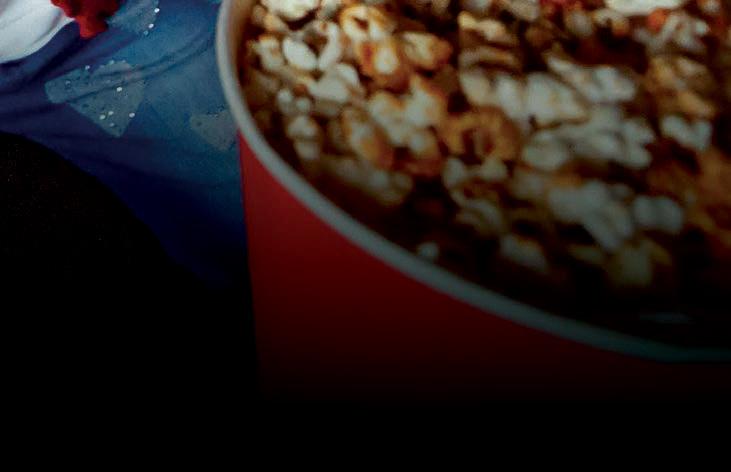





Schneider




Buchanan



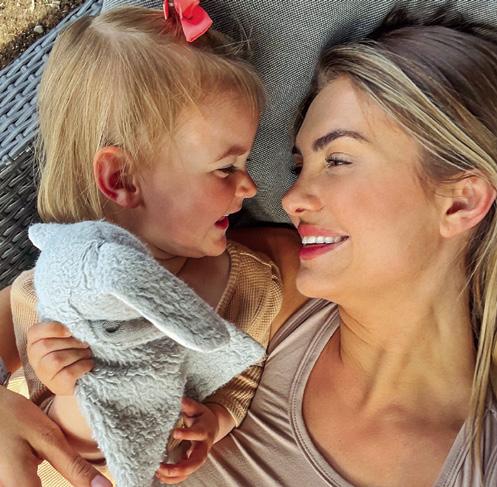



Manager
Wickheim




Manager









Schneider




Buchanan







Manager
Wickheim




Manager


With everything we have to do in a day, the last thing we parents need is more items to add to our to-do lists. But wait! These 10 to-dos will leave you feeling better for having done them and happily ready to tackle whatever else life throws your way. So let’s take a collective deep breath and give ourselves a pat on the back for having gotten the kids settled into a new school year—or even a new sleep rou tine!—and enjoy the feeling of checking off each of these to-dos.
1. Smile when your child enters the room. Simple advice, from a wise friend, that yields amazing results. Rather than being critical or questioning our children, smiling at them sets an entirely different mood, one that’s more conducive to conversation and connection.

2. Trust your instincts. Resist one-size-fits-all parenting advice and trust your gut instead.
3. Put down your phone. Be where you are. Talk (and text) less; listen more.
4. Spend one-on-one time with each child. Whether you have four children or one. It’s not as easy as it sounds, but it’s worthwhile. You’ll see—or be reminded of—a side of your kids that you might oth erwise miss.
5. Eat dinner together. Better yet, cook it that way, too. Not only does eating together lead to better eating habits, but it nourishes our minds and spirits, too.
6. Always give you kids the benefit of the doubt. Be their ally. Let them know you believe in them and show them that what they feel, say, think and do matters.
7. Count your blessings: your kid, whoever is helping you raise them, your friends, your family, food on the table, a bed to sleep in. Take time to consider all you’re grateful for: from the quiet in the morning before everyone wakes up to the feeling of your child’s hand in yours.
8. Play with your kids more. Not only does it lower stress—yours and theirs—but it also unleashes kids’ creativity while helping develop their imagination, dexterity, and physical, cognitive, and emotional strength. Better still is playing together outside in nature.
9. Spend time with people who love spending time with their children—and yours. Create a community that celebrates and supports the important job of raising kids. And then invite others in. Share meals, outings, babysitting, rides, resources, wisdom, laughter, tears, expertise, feelings, worries, ideas, and camping trips, among other things.
10. Appreciate the moments. Even on the most crazy days, there are highlights: when all the packed lunches end up with the right kid, at the right school’ when you get a shower and, bonus, five extra min utes to sit with your kids at breakfast. Celebrate the small stuff. And slow down enough to enjoy the time you have together.

Enter the photography challenge that’s open to all kids and youth ages 18 and under in British Columbia. Participants receive weekly prompts designed to inspire them to get out into their community—or just their own backyard—and snap away! The top photos will be chosen to go into the Kids Up Front calendar and sold at the end of the year. Participants also have a chance to win prizes. Photography classes are available to children and youth in the 100+ partner agencies. For more information, visit kidsupfrontvancouver.com/lens. Register at

This annual event promoting digital media literacy across Canada takes place from October 24–28. Schools, libraries, museums and community groups organize events and activities throughout the week. The teachers’ hub features five days of activities curated around five media literacy themes: use, understand, engage (including activities for Digital Citizen Day), access and verify. There are also special pre-recorded plug and play lessons, led by MediaSmarts experts, covering topics like body image, online hate and identifying what’s real online. Incorporate these digital media literacy activities into your daily activities during Media Literacy Week and beyond. For more ideas and printable activities, visit mediasmarts.ca
This exhibition, arriving in Vancouver this fall, celebrates the 100th anniversary of the discovery of King Tut’s tomb. It features huge screens that display cinematic scenes and take viewers through the fascinating story of King Tutankhamun and his life. Explore King Tut’s tomb with the award-winning Tutankha mun: Enter the Tomb virtual reality experience. Beyond King Tut opens on November 4 and runs until January 8, 2023. Hours: Sundays to Thursdays 10am–8pm; Fridays and Saturdays 10am–9pm. The exhibition is closed on December 25 and January 1. Visit beyondkingtut.com/city/Vancouver

November 20 is National Child Day in Canada, also celebrated across the globe as World Children’s Day. This is because on November 20, 1989, the United Nations adopted the Conven tion on the Rights of the Child (CRC), a promise to children to protect and promote their human rights. On this day, everyone in Canada and around the world is encouraged to “Go Blue” for children and youth. Monuments across the country will light up blue, people will wear blue and many voices will take to social media to champion the day online. National Child Day is a day for children, by children—a chance to hear from children and youth about what matters to them. To download the Blue Toolkit, visit oneyouth.unicef.ca.

BC Children’s Hospital Foundation has partnered with PetSmart Charities of Canada to launch a Pet Therapy Pro gram specifically designed to assist BC Children’s Hospital staff cope with stress, anxiety and work-related health issues. As the pandemic continues to challenge healthcare workers, the Pet Therapy Program helps to promote the physical and mental healing power of therapy animals for BC Children’s Hospital staff. The hospital’s pet therapy program offers monthly staff wellness group events and supports resiliency rounds for nurses on inpatient floors. Each visit allows op portunities for staff to pet the dogs and take a mental break from the busyness of their day. To learn more, visit bcchf.ca or petsmartcharities.ca.

Pumpkin spice lattés and Hot Pockets aren’t the only things to help keep you warm this winter. Here you’ll find a few of the season’s must-haves for a warm and cozy winter that’ll have you and your family feeling as good as a cup of cocoa by candlelight.
Full coverage and warmth for small skiers and riders who want to play outside in wind or wet snow (because wet snow is the best building snow). This classic one-piece suit offers warmth and weather protection when there’s fun to be had in fall and winter. mec.ca
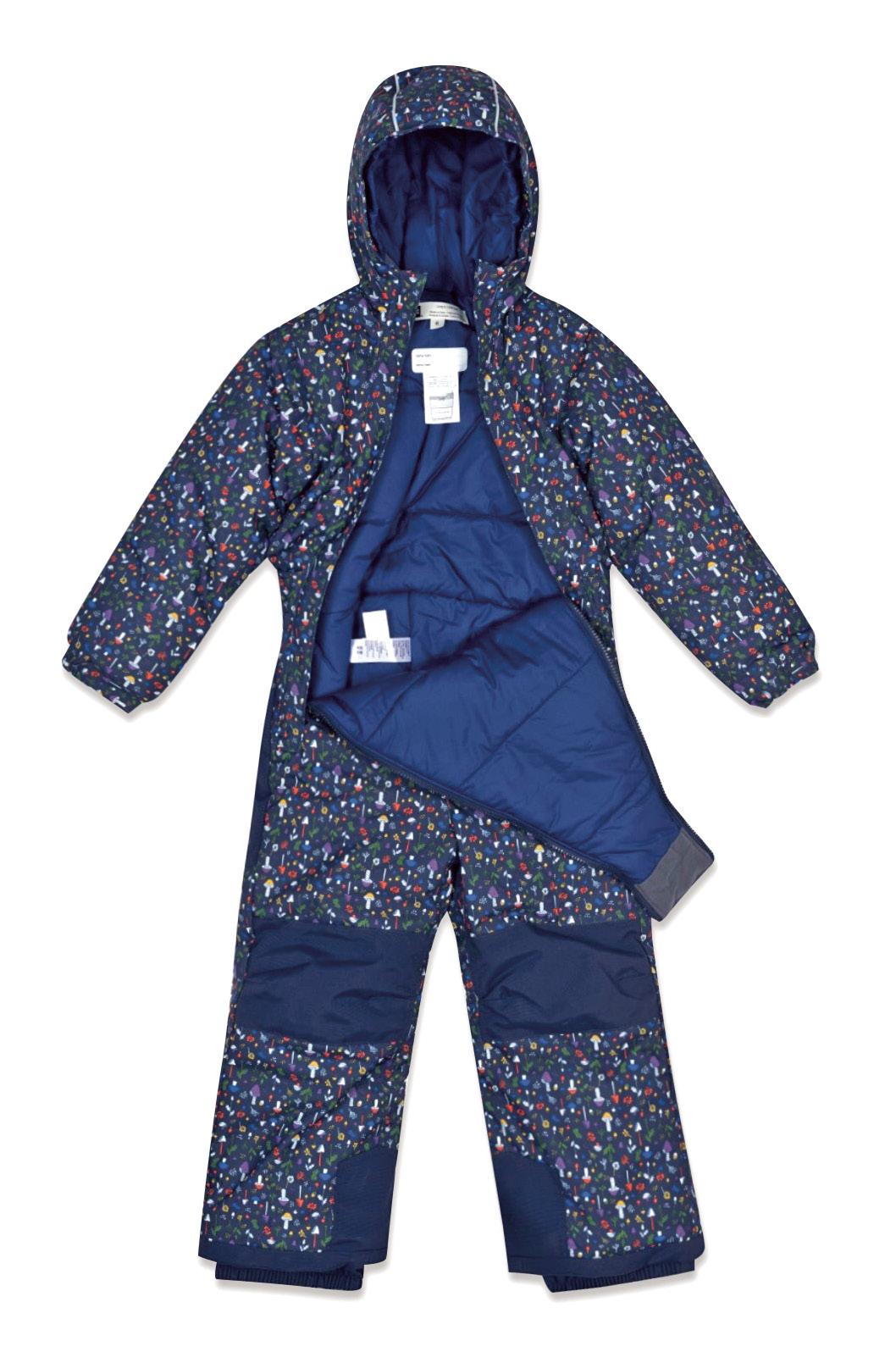
These over-the-arm and adjustable mitts are perfect for the cooler months or the downright frigid and freezing! The wide opening that goes over the arm makes it easy to slide onto little hands. Because Stonz Mitts are designed to go over-the-arm, kids’ hands—and arms— stay snug and warm. And the mittens stay on.


Sized for babies up to 6 months old and for those between 6–18months old, the Baby Beanie Pom is a comfortable rib knit style that features a pom-pom and lightly stretches to adapt to growth. Comes in taupe, ash rose, heather grey and black. herschel.ca
What better way to keep you cozy this winter than a soft sherpa bouclé texture, accented with a multi-coloured print inspired by world cultures for an ultra-comforting deco touch. Durable and chic, this throw will become a family favourite before winter turns to spring. simons.ca
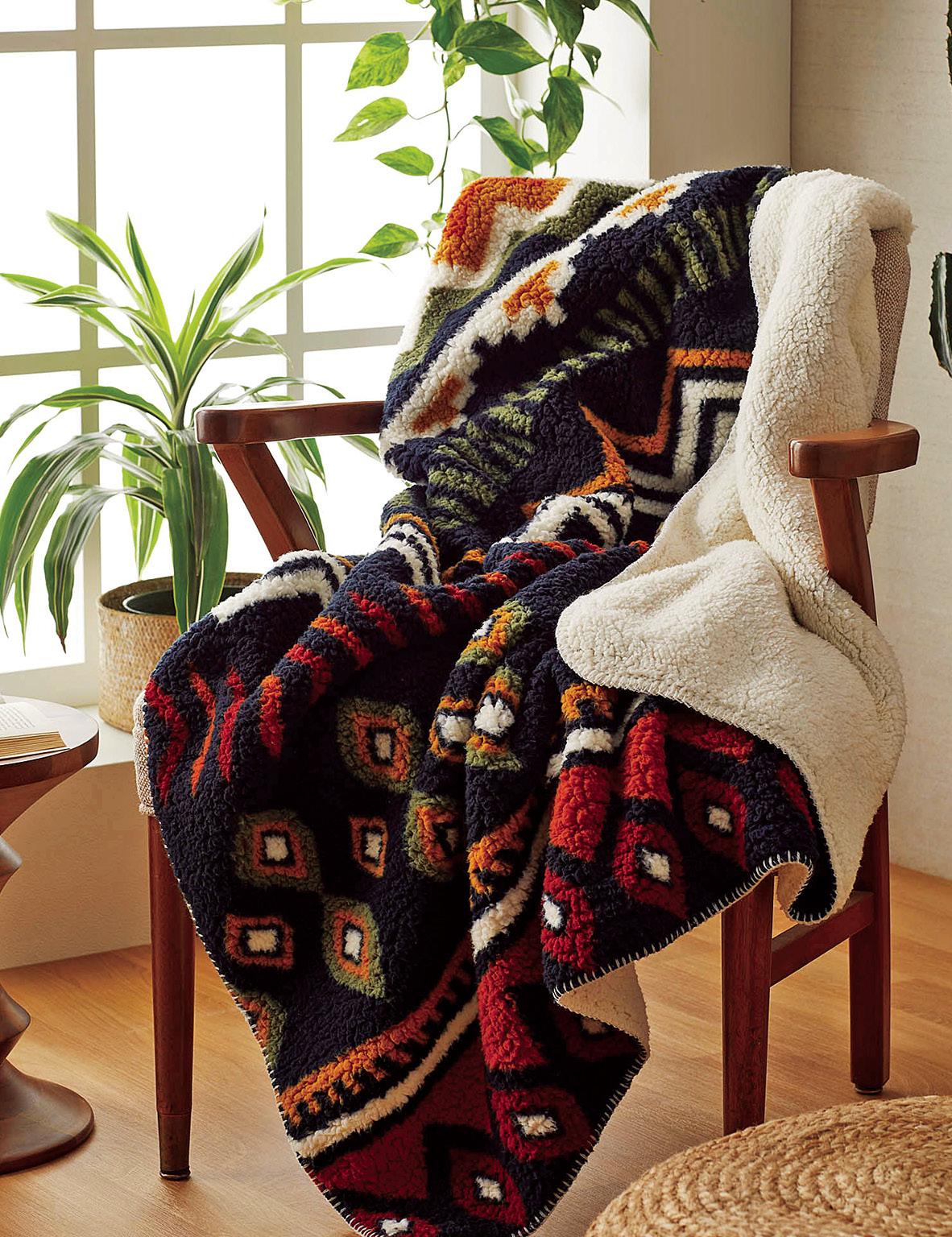
Highest quality stainless steel and silicone grip pads in prints that coordinate with Kinsho’s bentos. Designed to keep lunches warm or cool. Designs include: unicorns, dinosaurs, robots, koalas and more. kinshokitchen.com
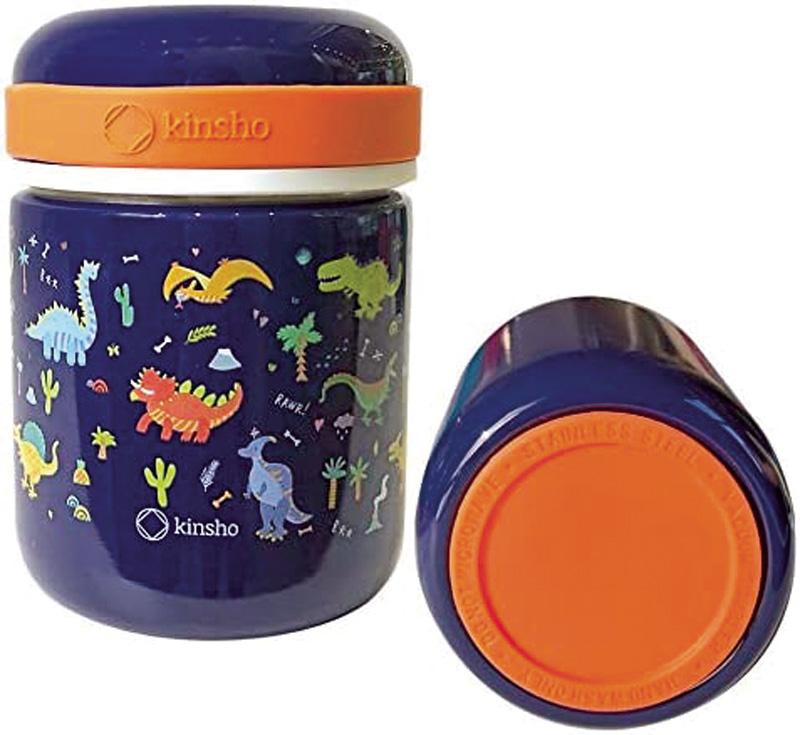
The world is full of suffering which can feel overwhelm ing. Worry and stress can zap our energy, challenging us to have the courage to be fully present in the world.
How can we transform our emotions, choose our respons es wisely and stay present?
Gelong Thubten, author of A Monk’s Guide to Happiness says we experience stress when we:
• Don’t get what we want.
• Get what we don’t want.
• Protect what we have.
• Lose what we love.
Sound familiar? How many of those examples can you name from today?!
The phrases above are examples of grasping which mat ters because our minds shrink when under stress. Stress
squashes our natural kindness and desire for connectivity. Emotions do have to go somewhere; they are like electricity. Luckily emotions convert to energy and to practice feeling our feels, makes us more human and humane.
There many capacities we can build and simple strategies to try:
Get out into nature to realize that life wants life. It takes you out of yourself. You can sit in your insignificance and realize it’s not all about you. Lightness and gratitude are in sight when we stop the profound disconnect felt from our living world.
Where is the place you go to experience beauty, awe, mystery, and magic? How could you get more of it and what’s stopping you?!


Walk, climb or bike to a mountain summit, even a local knoll or viewpoint. Watch the sunrise or sunset over an ex pansive landscape. Soak up the view and overwhelm your brain with beauty. Our body responds when we experience being a part of something bigger than yourself. Want to learn more? Read about attention restoration theory (ART) which explains how time in nature can replenish us— sup porting executive function and self-regulation.
ART is also alive when we take time for fireside conver sation and connection. Have you spent time staring into a fire? Think about the feeling you experience surrounded by darkness. Darkness in this sense can help turn down the vol ume on distractions, worries and even gently nudge people to speak openly and share or think more clearly. Authors Harper, Rose and Segal of Nature-Based Therapy: A practi
tioner’s guide to working outdoors with children, youth, and families say “...your ability to think lucidly and share without pretense is heightened.”
Gratitude is a social emotion. It points to what’s already there. Gratitude also solidifies our relationship with living mystery and enhances our resilience (the ability to bounce back). Grab a journal and jot down three things before bed (when the mind is most suggestive) and see if it helps you build your capacity to face hard info. Express gratitude for things big and small—the moon, stars, friendship, safety or time to enjoy a cup of good coffee.
In the Buddhist tradition, pride is equal to poison. Pride’s friends are desire, jealousy, anger and ignorance. The prob lem with ordinary pride is it focuses on self-importance. You might fixate on proving your status and value. This leaves zero room for humour and lightness!
Instead, try Vajra pride:
• Based on trust in one’s inherent worth and value
• Takes courage!
• “Primordial self-esteem”
Stop constantly trying to prove yourself. From here you can relax. Then, watch how easily you can stand tall with basic confidence, find clarity and find yourself grounded in fearlessness.
On my son’s birthday I read an excerpt of my grandfa ther’s life story. It gives great perspective on whose shoul ders he stands on! Think of the people in your life who kept going, were tenacious, steadfast and patient. Recall a men tor, teacher or coach. What do you remember about their stories? How was it to be around them? What were their traits and capacities? Their lives may offer you as a lesson to persevere. You may uncover excellent examples of how to stay on the path and to keep going forward.

Which ideas have your attention? Pace yourself, this is not a checklist. Don’t hesitate to contemplate these strategies before diving in!
Lindsay Coulter is a writer, educator, facilitator, naturalist, community catalyst, soul activist, mentor and dedicated mother of two. She’s a co-founder and Director at EPIC Learning Centre nature school in Victoria. Find her @SaneAction on Instagram and Facebook.
Journal writing can help kids explore and process feelings, build writing skills, and communicate their ideas. Here are a few ideas to help get you started.
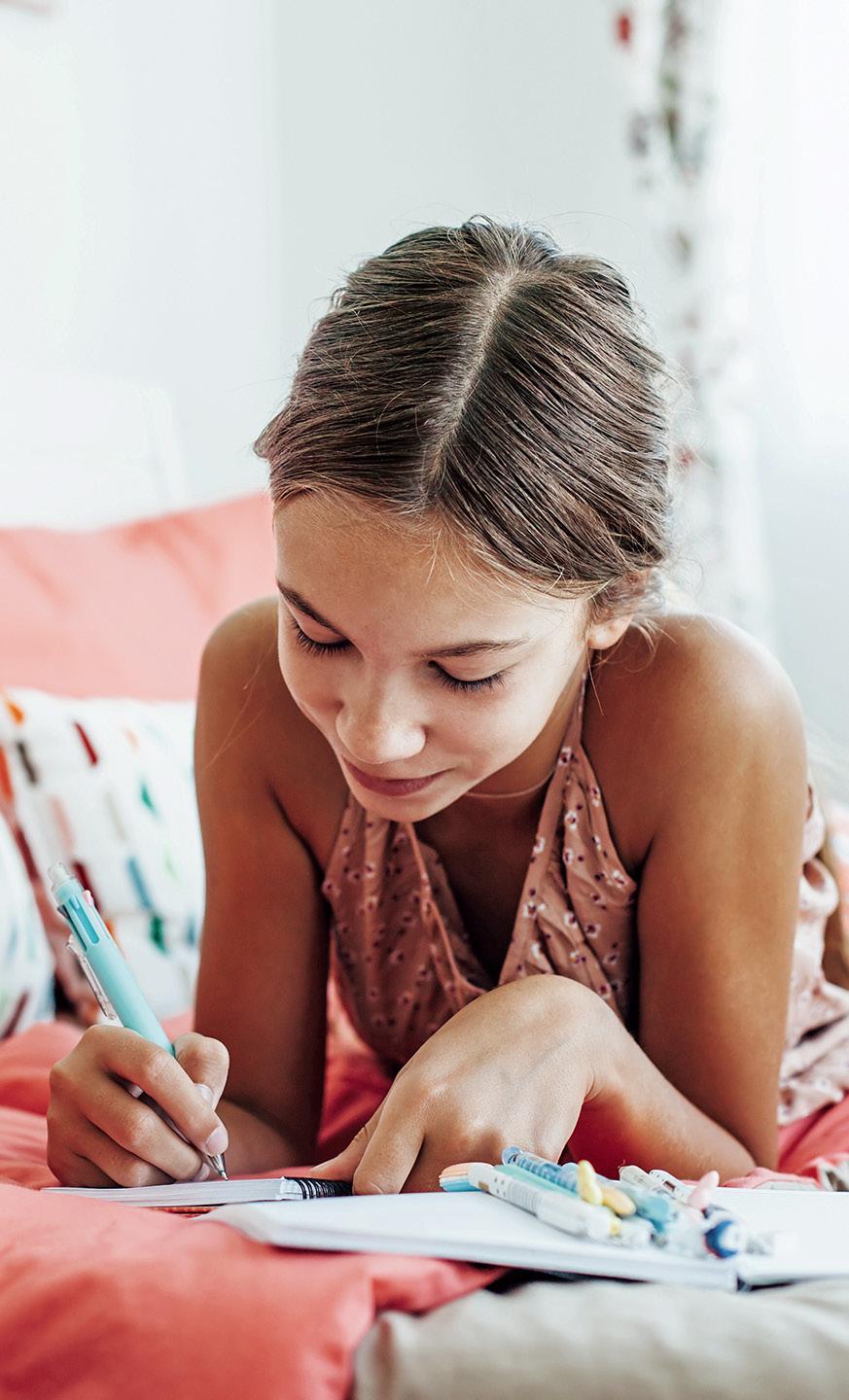
1. Find a large journal or a scrapbook that will lie flat on the table; make sure the scrapbook is big enough that there is ample room for creativity. You have one page, your child has the other. Look for journals and scrapbooks in art stores and dollar stores.
2. Find a special place to store this journal, somewhere reachable for your child. This journal is something to share only between the two of you, not something to Show and Tell. It is a sacred trust. Your child will guide you and this is based on their wishes. It can also be helpful to put a date somewhere on the page.
3. Let your child take the lead, making this journal their own. They may want to decorate the front cover of the jour nal, do not push. Best not to jump to teaching moments. This is not homework. For example, if your child draws on your side of the page, let them explore the boundary. Talk about it. Once trust and interest have been firmly established, engage in a positive, mutually inclusive conversation about consent/ permission or other topics that may arise.
4. All mediums are welcome on the page: pencil, felt, tape, paint, glue, multimedia, collage. Anything goes. Let your child lead, incorporating any of their “stuff” onto the page. They might find ways to add sparkles or mud or other “treasures.” It is also okay to let them explore destroying a page, it is just a page of a journal. Reminder, there are no jour nal police.
5. The journal is always there. If you are upset or struggling with something or when you need a break from day-to-day routine, take it out. You are the model for this process. Your child learns from your attitude and approach. Remember that the process is enough. Your child may or may not join you. Do not force participation. No punitive measures or pressured outcomes should interfere or be connected to this activity.
Try your best to not comment on what is “good” or what appeals to you instead become curious and ask questions: What colours did you use? Do you like that color? What is that? Tell me more about that. It’s important to be present. Sometimes the non- verbal can be more supportive than vo cal praise because it does not stop the process. Remember, the value is in the “doing,” the process is more important than words or content.
Excerpted from Just the Two of Us: A Soft Place to Land for Tender Hearts by Nicolle Nattrass. Just the Two of Us is a guide on how to use creative journaling as a key recovery tool to help children ages four and up connect and process stress, anxiety, trauma.
Finding balance and slowing down—something I haven’t been great at.
Instead I get caught up in trying to do great things, more often and faster.
Like build a career and a healthy body.
Parent well, multitask and respond.
Nurture meaningful friendships.
Make the sort of money that qualifies me as “rich” so that I can have anything.
Cook, clean and get the house organized to be the wife I know deep down my husband desires—or so I’ve made my self believe that which is debilitating.
While most of that list is important, I had an epiphany worth sharing that literally brought me to tears.
I had more things to do—deadlines, the “what’s next?” feeling of “slipping behind” if I’m not “getting ahead.”
I was about to run upstairs to do my usual hide for free dom to finish work, but unusually instead, decided to sit outside, just close my eyes and breathe through the over whelm.
My daughter came over to me for a cuddle and she hugged me longer than she’s ever done before. The warmth of the sunset seemed everlasting as the clouds moved away for the night.
Then she pushed away for a moment, looked into my eyes and maybe it was the golden hour light, but I’ve never seen so deep into her soul before.
She smiled, and I got lost in that moment.

I really saw her, and she saw me.
Time slowed down so beautifully and all that mattered, truly, was living in that moment.
I teared up knowing how important this awakening was to me, and how I could have missed it entirely running off to do the next thing.
I can write this now as therapy to my soul, and I’m proud to have felt these powerful realizations—in essence:
• the importance of creating a time to work and a nonnegotiable time to live.
• discerning what deserves our attention now, from what may be important in life— but can wait.
• finding the balance and pause in our day to keep going without burning out.
• living for the in-between moments where you just get lost in time instead of rushing through it—and while there— taking every ounce of it in.
• realizing that life isn’t about having anything you’ve ever wanted, it’s knowing you already have it all.

Hiding, detachment and desensitization
Overthinking/over-critical
Imposter syndrome
Short-tempered/impatient
Irritable snaps followed by guilt
And that makes me a perfectly normal human who needs to redirect focus to her own needs.
Natasha Mills is a twin mom of three residing on the Vancouver Island for nearly 30 years. She has found a creative outlet in documenting the real moments of parenthood—the relatable highs and challenging lows. She has also found a passion in writing her experience of motherhood and connecting with many like-minded parents in her community and abroad. @mommamillsblog
Since I was a young child, I have been afraid of stars. My fear of them falling on me has stopped me from looking up into the night sky. It is, I concede, a rather ridiculous fear, but biologically it is normal for humans to have some fears. They keep us safe.
Admittedly, since becoming a mother, my list of fears and anxieties has extended past the night sky. I am scared of many things now, from pedophiles to lice. In fact, if I am truly honest, I sometimes wonder if I have become a bit of a worrywart. There seem to be so many dangers out there for our children that I frequently fight the urge to send them out into the world with mouth-guards, helmets, face masks and full body shields now, too, to protect them from it all.
I may not force them to wear full body armor—I am still somewhat rational—but I can admit that I am one of those parents that can’t stop herself from repeating dire warnings to my children every time they leave the house. Comments like “look both ways when crossing the street,” accompanied by the right-left-right head movement for added emphasis. Or “don’t talk to strangers!” These are much like the “be care ful!” warnings called out almost obsessively by most adults when they see a child high up on monkey bars or the “have fun…but not too much fun!” from parents of teenagers.
I am increasingly aware, however, that these types of com ments only assuage our fears; they are more based in super stition than usefulness. Do they really protect our children from all the real or perceived dangers out there?

One of my daughters has been badly injured twice. The first time, her finger got caught in a conveyor belt at the
grocery store and amputated. Her finger is back in its right ful place, thanks to modern medicine, but I still think about it. When my daughter was in a full cast from shoulder to tip of finger, a stranger asked us what had happened and, upon hearing my daughter’s story, haughtily exclaimed that she never let her children touch the conveyor belt. That comment sent me into a guilt-ridden tizzy. If I had said to my daughter “don’t touch” or “danger, danger, danger!” more vehemently every time we got near a cash register, would this accident have been avoided? Would this four-year-old, full of curiosity and wonder, have remembered these warnings when she saw a deliciously tempting hole in the belt and placed her finger in it to see what was inside? The answer is obvious since she did not heed to or remember my numerous warnings. Which brings up the uselessness of my somewhat obsessive desire to warn my children constantly about all the dangers around them.
In the same way I questioned my ability to prevent the awful grocery store episode, I wondered if the trampoline incident that happened a few years later was my fault. Again, my lovely, curious and adventurous daughter found delicious joy in attempting to defy gravity on a trampoline, despite my repeated pleas for her to be careful. Unfortunately she landed at the wrong angle, breaking bones in her leg. A couple nights in the hospital, surgery to make everything right again, a cast that went from hip to toes and many weeks in a wheelchair later, my courageous daughter healed and moved on with life. I, once again, grappled with guilt and the desire to protect her even more from the world. I cursed myself for ever letting her
on a trampoline, let alone letting her jump on one, and seri ously contemplated getting rid of ours.
A few months later, my daughter was back on the tram poline. It was hard for me. I fought the urge to tell her to be careful. Don’t jump too high, keep your knees bent, don’t flop down, be careful, just stop and get off please!! I didn’t say a thing. I was learning that constantly warning children of pos sible dangers doesn’t always prevent bad things from hap pening. It just makes them anxious, hyper focused on what can go wrong rather than what is right. Like I was doing.
I watched quietly as my daughter bounced on that trampo line for the first time since the accident. She did not need my warnings or words of advice. The experience had taught her more than I ever could. She jumped more cautiously than be fore, but she still had the biggest smile. She still had that joy ful feeling of flying through the air. In staying quiet, I allowed her to make decisions based on her abilities and experience, not my fears. It also gave me the chance to enjoy the mo ment rather than focus on all the potential dangers.
My daughter’s accident showed me that I have to let go of the idea that I can control everything. I can’t. Unfortunately, sometimes our worst fears will materialize even if we tell our
loved ones to wear helmets or buckle their seatbelts at every opportunity. Although scary, this thought is also liberating. Fear may be genetically encoded in us to ensure our survival, but too much of it prevents us from experiencing life’s joys. Like all things, there has to be a balance. We must counter that overwhelming urge to protect our children with the knowledge that they won’t truly live if we shield them from everything. I don’t want my daughters to let fear, more pre cisely my fears, dictate what they do or don’t do. They can figure it out on their own. I need to trust their instincts and only occasionally allow myself to say “be careful!” I need to start looking at the stars, too.
Jeanne Humphries has advanced degrees from the University of Toronto in French Literature with a specialization in Women and Gender Studies, and is very proud of her three daughters.



Being first-time moms, my wife and I watched just about every YouTube video and read as many blogs as we could about what to expect and what to do
But almost all of that went out the win dow a night or two after our son was born.
That’s when we entered into survival-ofthe-fittest mode. What mattered was what
Shush (babies seem to love a loud shhhhh sound)
Our son also loves the over-the-shoulder burp position with lots of bum pats. Babies seem to love this because—we’d read—it simulates the same feeling as the mom’s heart beat when they were in the womb so they find it familiar and relaxing. I’m not convinced that’s exactly why, but no mat ter—he sure does love a bum bum pat.
Now we’re in Week 3 and everything we thought worked in the first week no longer applies. Those blog moms make it look so easy, but I guarantee you they were also pull ing out their hair in those initial wee hours, offering everything they could imagine to get their little one to sleep.
Whether you are a first-time mom or a seasoned pro, I’m sure you’ve had your mo ments too. It’s important in those moments to remember that whatever you’re facing at the time is temporary; you’re doing a great job—even if it doesn’t feel like you can do anything right—and it will pass.
My friends who have kids tell me “the days are long, but the years are short” and that’s what my wife and I tell ourselves when we’re so tired we can’t see straight. This time is hard, and that’s okay. But when you finally get those scrunched up snuggles and hear those tiny baby snores it makes the tough times a little easier. Before we know it, our son will be too cool for snuggles and we’ll miss those endless nights.
So for now I’ll skip the mom blogs and just do whatever works and when that doesn’t work there’s always strong coffee!
for a variety of things when it came to hav ing a baby. Baby sleep tips for newborns? Yup, heard those. Calm babies quickly? You bet. We could tell you how to “instantly calm a crying baby with four little-known tech niques that work when nothing else does.” We heard and memorized them all.
would calm our son down, what made him sleep the longest, whatever it took at 2 a.m. when he was a mad little man to get just five more minutes of sleep. We dubbed our sur vival strategy “The 3 S’s.”
Swaddle (or cuddle against body tightly)
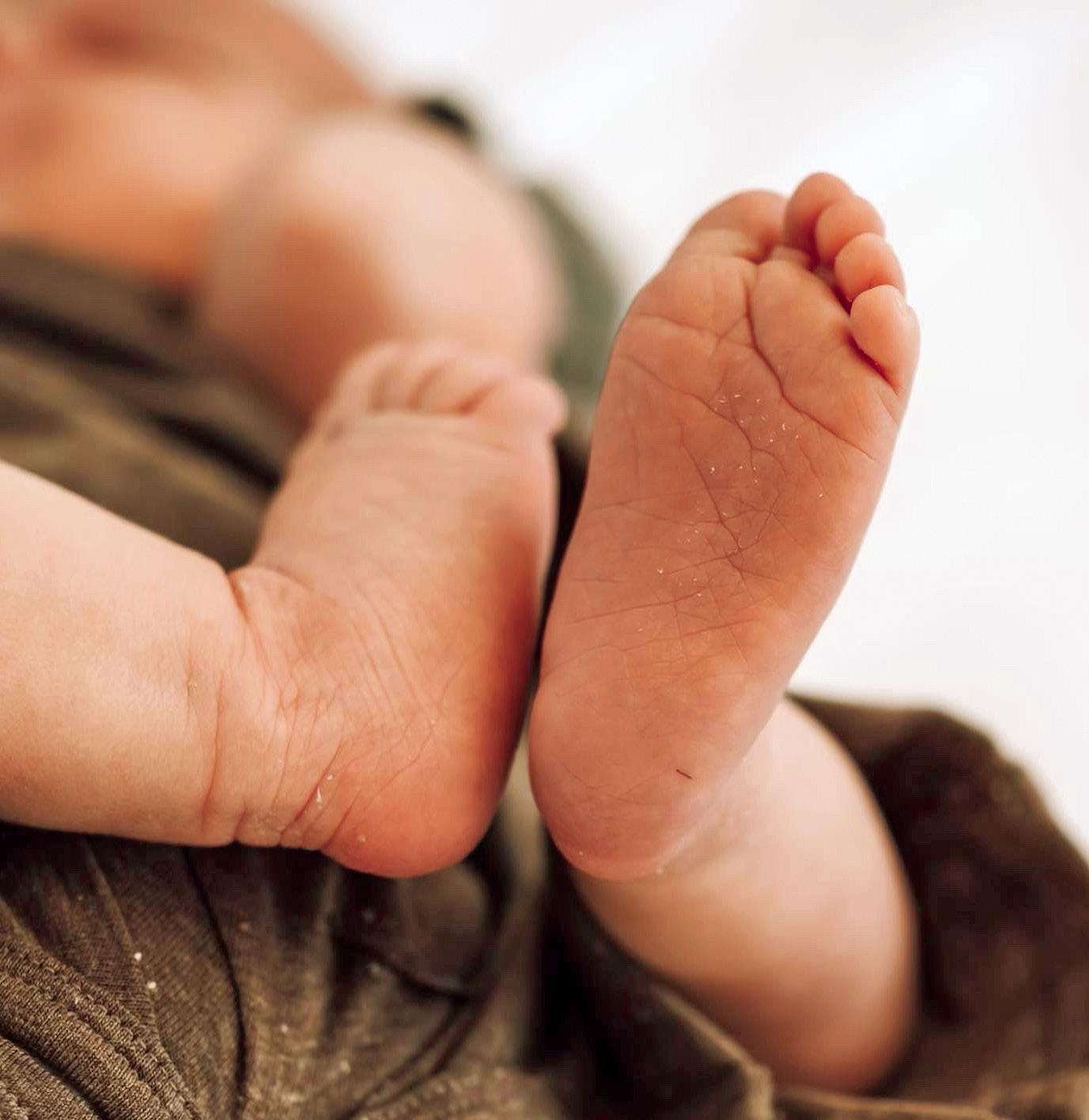
Sway side to side
Malia Fast lives in Langley, BC with her beautiful wife, baby boy, two amazing dogs and one crazy cat! She is excited to share her journey as a first-time mom.



























Halloween celebrations are often synonymous with candy. But they don’t have to be. Leave the candy for the trick-or-treats and serve some ghoulishly healthy food instead! These recipes are perfect whether you’re throwing a Halloween party or wanting to fill your kids up with something a bit healthier before they head out with their treat bags.
(Total time: 10 minutes)
Everyone loves to dip vegetables, pitas and corn chips. This pump kin hummus is great way to fuel your little ghosts and goblins.
1 can of chickpeas
2⁄3 cup of pumpkin puree
2 Tbsp water
2 Tbsp olive oil
1 Tbsp tahini
2 tsp lemon juice
1 tsp garlic powder
1⁄2 tsp salt, to taste
2 Tbsp toasted pumpkin seeds
1. Drain and rinse the chickpeas. Place them in a food processor or blender with the pumpkin puree, water, olive oil, tahini, lemon juice, garlic powder and salt. Pulse until smooth and well blended. It might take a bit more water to get the chickpeas to fully blend.
2. Taste and adjust the salt as needed. Spoon into a bowl for serving and top with the pumpkin seeds.
(Total time: 5 minutes)
This ghoulish guacamole is packed with healthy fats, vitamin and minerals. To turn it into a meal, serve it with simple quesadillas made from flour tortillas stuffed with refried beans and cheese.
4 avocados
1 Tbsp lime juice
1⁄2 tsp salt
1⁄4 tsp garlic powder
1⁄4 cup of sour cream
2 Roma tomatoes
1. Remove the pit and scoop the avocado out into a medium sized serving bowl. Use a fork to mash the avocado.
2. Add the lime juice, salt and garlic powder. Stir to mix all of the ingredients.
3. Spread the sour cream around the edge of the guacamole dip.
4. Finely chop the tomato. Drain any liquid from the tomatoes. Spread the tomatoes out on top of the sour cream.
5. Serve with corn chips.
(Prep time: 5 to 10 minutes, Bake time: 10 minutes)
Mini pizzas are fun for kids to make and decorate themselves! Of fer a bunch of different ingredients and a choice of orange or white cheese. You may even find them choosing to try something new, just because it was the right colour for their monster face.

Tiny pizzas can be made using small portions of pizza dough. How ever, this recipe is for English muffins, because they’re so much easier. Perfect when you need a quick meal. If you want to use pizza dough, form pizzas using about 1⁄2 cup of dough per pizza. Then bake for 20 minutes instead.
4 English muffins
1 small can of pizza sauce
1 cup of grated cheese
Other toppings
1. Preheat the oven to 400°F.
2. Prepare your pizzas while the oven preheats. Slice the English muffins in half, so each English muffin makes two monster faces.
3. Spread the cut side of the English muffin with pizza sauce. Then encourage your kids to make monster faces from whatever you happen to have in the kitchen. If they are old enough, they can slice and dice everything to exactly the shape they need. Younger children may need a bit more help with their monster creations. Offer ingredients like mushrooms, peppers, tomatoes. Get creative with frozen peas or corn, sliced olives, or pickles. Even sliced fruit can make fun and delicious pizza toppings.
4. Place the pizza faces on a cookie sheet and bake for 8 to 10 min utes, until the cheese is melted.
(Total time: 15 to 20 minutes)

Popcorn is an easy, healthy and delicious treat! Stove-top popcorn is also zero-waste! Here’s a simple recipe for stove top dill pickle pop corn. Yum!
Probably the hardest ingredient to find is citric acid. It provides the tanginess in this recipe. If you don’t have it in your cupboard, leave it out along with the coriander and mustard seeds, for a ranch flavoured popcorn instead.
11⁄2 tsp coriander seeds
1⁄4 tsp yellow mustard seeds
1⁄4 tsp dill seed
1⁄2 tsp dried dill
1⁄4 tsp garlic powder
1⁄4 tsp onion powder
1⁄4 tsp citric acid



1 tsp salt, to taste
2 Tbsp of vegetable oil
1⁄2 cup of popcorn kernels
6 Tbsp melted butter
1. Mix the seeds in a spice grinder and grind to a fine powder. Mix the freshly ground spices in a small bowl with the rest of the spice mix. Set aside while you make the popcorn.
2. Place the vegetable oil in the bottom of a large pot with 3 pop corn kernels. Put the lid on the pot and place it over medium heat.
3. When one of the kernels pops, the pot is hot enough to make popcorn. Add the rest of the kernels and gently shake the pot over the burner. Get your older kids to help! It’s fun to listen to the popcorn pop!
4. Once most of the kernels have popped, dump the popcorn in a large bowl. Melt the butter and drizzle it over the popcorn. Toss to mix, then add your spice mix and toss again.
5. Serve immediately or store in a zip-top bag for up to 2 days.
Emillie Parrish writes from Victoria and Saturna Island. She is the author of the Pacific Northwest lifestyle blog BerriesAndBarnacles.com

Saying thank you is one of the first social rules many parents teach their children—and for good reason. We want our kids to be appreciative and not take things for granted. Learning to be grateful can improve kids’ relation ships, ability to empathize and overall happiness.
To reinforce the importance of gratitude or to find other meaningful ways your kids can show appreciation, here are some tips:

Call attention to it when people—including your kids!—do things that go beyond what’s expected: helping without be ing asked, being especially thoughtful or taking extra time to do something because it’s important to someone else. Send the message that you will notice if they knock themselves out for you, or for someone else.
Kids learn from watching their parents. Show them what it means to be grateful by offering a genuine “thank you!” to a store clerk, a helpful neighbor, someone who holds the door open for you. But don’t stop there — include your kids, too. Thanking children for doing things that are helpful, even when they are chores like putting away toys, reinforces the behavior and lets them know they’re appreciated.
For some kids, especially young children or those who have trouble understanding emotions, it can help to talk about how showing appreciation makes other people feel. Try asking your child how they feel when people say thank you to them for doing something nice, and then how they feel when they don’t. Going over their own feelings will help them understand how their behavior affects others and make it easier for them to understand the emotional benefits of being grateful.
There are lots of ways to show gratitude. If your child isn’t comfortable talking to strangers or has a hard time express ing him or herself in writing, work together to come up with a different way for them to show their appreciation. They could try giving a smile or a thumbs up if someone holds the door or show Grandma how much they love their new coat by draw ing a thank you picture (or taking a smiling selfie!) instead of writing a card.
Encourage kids to think of people who help them, from coaches to neighbors to the local firemen, and say thanks with cookies or cupcakes. Making them and giving them are fun, and they help kids see how connected we all are.
Talk to your kids about those who are less fortunate. Don’t scare them, but don’t keep them in the dark either. Under standing that not everyone has the same advantages will help them develop compassion for others and gratitude for their own privileges.
Encourage kids to turn their interests into action. Whether it’s a fundraising drive at school, a bake sale or a run for char ity, expressing their interests and using their skills for a good
cause is a great way to boost their confidence and give them a chance to give back at the same time.
If kids are too young to go alone or aren’t comfortable deal ing with strangers solo, make giving back a family affair. Find places where you can volunteer together or let your child choose a charity to donate to. Giving and gratitude go hand in hand, and doing it as a family will bring everyone closer and help you make some great memories.
When you tuck your kids in at night, ask them to tell you three things they’re grateful for. Even if they’ve had a bad day it will help them—and you—end each day on a positive note.
Be mindful of the fact that your child may have their own way of expressing gratitude, even if it doesn’t fit your expec tations. Different kids communicate in different ways. For ex ample, your child may be more comfortable giving a hug than a verbal thank you, or might show their appreciation by help ing out around the house or drawing you a picture. Tuning in to your child’s unique way of being thankful will let them know that even as they’re learning new ways to give back, you see and appreciate the thoughtful person they already are.
From Child Mind Institute. For more tips, visit childmind.org
A space where parents, grandparents, nannies, aunties, titas and caregivers can make time and `collect the moments, one by one`
Chorus & Clouds IS ONE OF A KIND in offering highest quality Music classes, Art Exploration classes and Infant Development classes as well as a specialized toy shop at our new location in Kitsilano.


An early learning studio for infants, toddlers and pre-school aged children to explore the wonder in our world.
How long have you had “emergency kit” on your to-do list? Are you puzzled about what to put in it? Procrastinate no more.

Here is an organized way to get it done.
A grab-and-go bag may be one large pack for the whole family or smaller ones for each person. In any case, you need a bag(s) with emergency supplies that you can quickly grab if you need to evacuate.
1. Plan where to keep your supplies. Remember that not everyone will be home during a disaster and may need to have supplies with them. I suggest keeping a kit in the car, one at work, and one at school. These secondary kits may be abbreviated versions of your main kit, which should be kept where you spend most of your time. The family car might be the best spot for your main kit.
2. Consider the right type of bag(s). A bag with many compartments and outside pouches for quick access is most practical. A backpack is handy as it leaves your hands free for other tasks, such as carrying a child or pet or clearing debris. Alternative options are a bag with a shoulder strap or a suitcase on wheels, but keep in mind that it may be challenging to wheel a bag if there is debris on the streets.
3. Fill your bag(s) with the supplies listed below, including enough for 3–7 days. If you cannot purchase all the supplies at once, prioritize items based on your needs for water, food, shelter, protec tion of life and safeguarding from illness or injury.
• cash in small bills and coins
• car and house keys
• a friend’s or family member’s car and house keys
• phone charger
• disposable gloves
• pen, pencil, pad of paper
• poncho or raincoat, ideally one that can be used as an overhead cover or small tent
• work gloves
• hand sanitizer, tissues
• sunglasses
• an old pair of prescription glasses
• flashlight or headlamp
• copies of your communication, evacuation and shelter plans
• medication you cannot live without
• toothbrush, toothpaste, dental floss
• soap, shampoo, towel, deodorant, lip balm
• feminine hygiene supplies
• face cream, sunblock, bug spray
• flip flops for public showers
• toilet paper
• powdered laundry soap (avoid liquid soap because it may freeze)
• hat, coat, shoes, winter or rubber boots
• gloves, mittens, hat, scarf
• long pants, underwear, thermal undergarments, socks
• emergency blanket (silver, heat-reflecting)
• sleeping bag or blanket
• tent (or plastic sheeting)
• N95 masks
• candles
• extra batteries for flashlights, headlamps and other devices
• whistle (the international signal for help is three short blasts)
• battery-powered or wind-up radio
• sewing kit
• rope (parachute rope is light, strong and compact, with handy smaller inner threads)
• zip ties, duct tape
• multipurpose tool
• safety goggles
• resealable storage bags, garbage bags
• waterproof matches, lighter
• knife, hammer, multi-screwdriver, screws, nails
• two-way radios (walkie-talkies) split between family members’ packs
• survival book
• pictures or comfort items
• pocket-sized games, deck of cards
• toys, colouring books, stuffed animals for kids
• music, books
• earplugs (you may be sleeping in a crowded area)
• nutrition for at least 3–7 days (check with your pediatrician)

• extra clothing, blankets
• diapers and wipes for 3–7 days
• favourite stuffy
• medication
• store the first-aid kit for easy access, in an outside pouch or attached to the outside of a bag with a carabiner

• non-latex gloves
• bandages, gauze, tensor bandage, medical tape
• face masks
• slings and splints
• cotton swabs, disinfectant
• sanitary napkins (very absorbent and excellent for large wounds)
• scissors, tweezers
• CPR mask
• emergency blanket
• medications: antinausea/diarrhea, antihistamine, analgesics or pain killers, antibiotic ointment
• pocket-sized first-aid manual
• food for at least 3–7 days
• basic cooking supplies: manual can opener, ladle, bowls, plates, cups, utensils
• alternative cook stove
• water for 3–7 days: for drinking, cooking, and hygiene (can be carried separately from the grab-and-go bag)
• chlorine tablets to disinfect water in case boiling is not available to you
Et voilà, you can check “emergency kit” off your to-do list! But don’t stop now, you are on a roll: Keep the momentum going and develop your communication and evacuation plan.
Kim Fournier, CD, MA, is a disaster and emergency management specialist, author and instructor with a wealth of expertise gained during 30+ years in disaster man agement, community resilience and health, emergency response, Canadian military and international operations. For more details, visit kimfournier.com or get your copy of The 7 Steps to Emergency Preparedness for Fami lies: A Practical and Easy-to-Follow Guide to Prepare for Any Disaster.
Oooo, it’s that scary time of year again. But keep in mind, what’s scary for one might be downright terrifying for another! Have no fear! Many Halloween events offer the option for a scaled-down scare for younger attendees. Check beforehand to find out what’s adult-only and family friendly. For spooky ideas of things to send a shiver down your family’s spine read on—if you dare!
until October 31, various times pumpkinsafterdark.com

Featuring over 6,000 hand-carved pumpkins, this one-of-a-kind walk-through experience is a must-see event—the first one ever in Burnaby! Explore the magical pathway of lit pumpkin sculptures and displays at Swanguard Stadium, with music, sounds and special effects. With classic Halloween characters, dinosaurs and dragons, movie and pop culture icons, this family friendly event has something for everyone. There are even live pumpkin carving demonstra tions and fall treats and treats! Make Pumpkins After Dark your new annual tradition! Reserve tickets at pumpkinsafterdark.com.
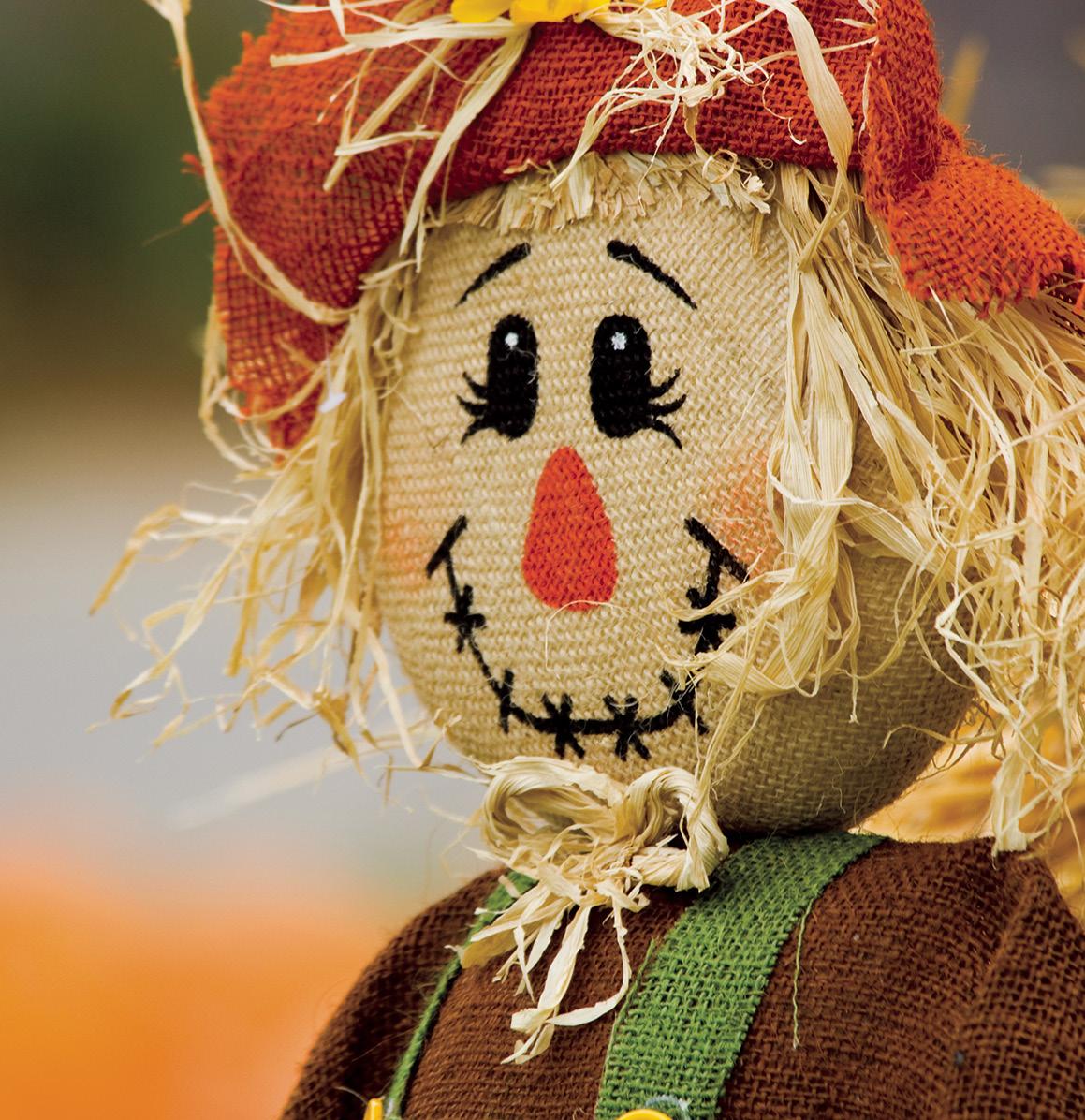
until October 31, 9am–6pm artsnursery.com/page/scarecrow-stroll
Come see 60+ unique scarecrows, get photos in the pop-up pumpkin patch, take part in the fun scavenger hunt and enjoy weekend live music and food trucks at Art’s Nursery in Surrey. Don’t expect your average scarecrows! Instead you’ll find space aliens, cartoon fish, superheroes, video game characters and more.
While you’re there, buy a Scarecrows for Charity kit for $19.98, take it home and build it—proceeds help support The Versatiles seniors acting guild, OWL Orphaned Wildlife Rehabilitation Society and Pacific Parklands Foundation.


Play based learning

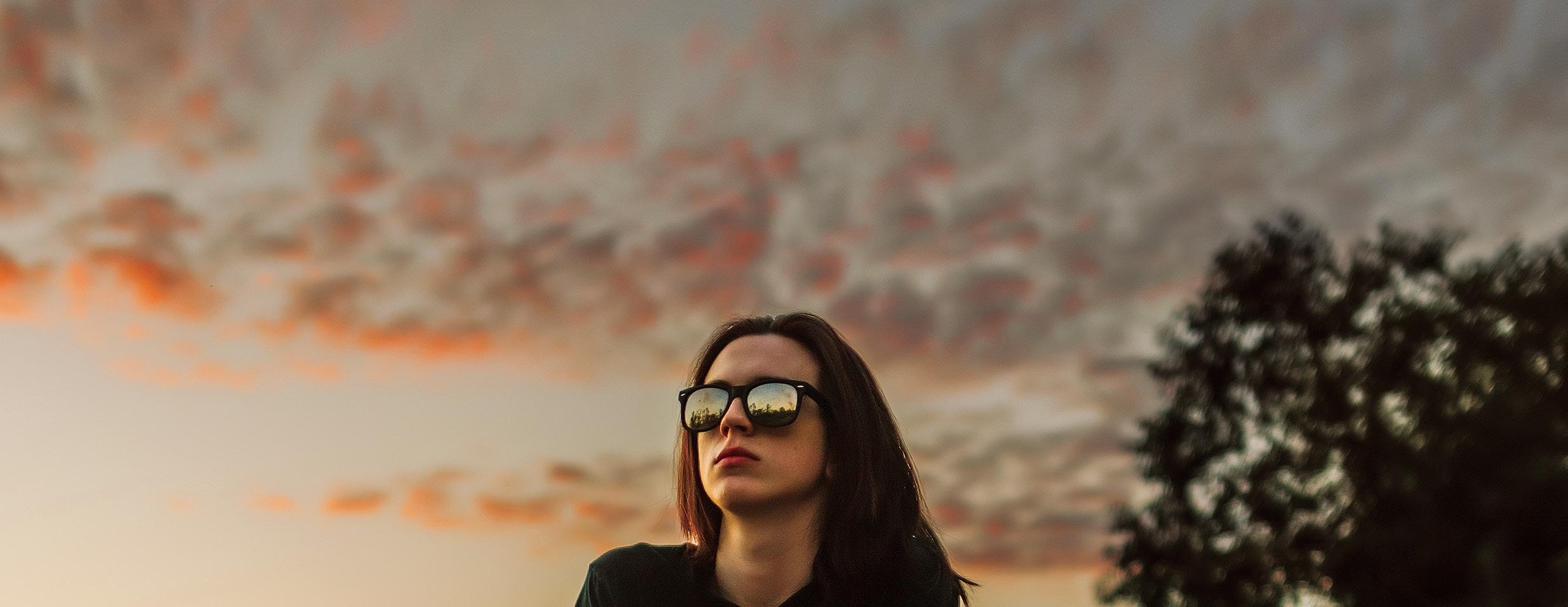
The question scribbled on the inside of a neatly folded piece of paper asked “What about when someone you RE ALLY like doesn’t like you back? When does it stop sucking?”
Ugh. Did that question just land in the pit of your stomach like it did for me?
Whether we survived romantic rejection in Grade 6, Grade 10, or more recently as an adult on an online dating app, it’s pretty easy to re-connect with the sharp edges of roman tic rejection.

As with all big life topics, start early and basic!
The earlier we begin having conversations through everyday life moments, the stronger our ’tweens’ and teens’ relationship skills and confidence will be. This starts in elementary school when we teach our kiddos about how to make and be in friendships. As we help them to understand that no matter how amazing they are, not everyone will return their interest and energy. Just as they also won’t return that of others, either.
and ultimately accept those boundaries. If we hold this understanding about boundaries, we can work to accept rejection without making it more personal than it needs to be.
As youth travel further down the road through middle school and beyond, they deserve to have the adults in their lives make space for the possibility they’ll experience romantic curiosities and connections without

In all honesty, when I consider the thou sands of candid, intelligent, intriguing and bold (looking at you Grade 9s!) questions I am asked every year, it’s the questions about rejection that challenge me most. Navigating romantic rejection is never easy but it can be especially difficult for youth in the midst of their new and exhilarating romantic feelings.
As their trusted adults, here are a few use ful reminders to help all of us navigate those oh-so-sharp edges of romantic rejection.
Although it feels personal, this rejection is not a reflection of their value as a person; it’s about the other person’s boundaries and our responsibility is to do our own work to respect
teasing or minimizing. Try not to make as sumptions that they will experience romantic attraction—many people do not! Young people often tell me that they don’t really
Jennifer Gibson, MA, is also known as “The Sex Lady”— for close to 20 years in Greater Victoria!—to the thousands of amazing youth and adults she is lucky to educate and learn with through her job as the Coordinator of Community Education at Island Sexual Health. She’s passionate about making sexuality education as positive, fun and non-cringe-able as possible.
share their relationship issues with the adults around them because they don’t want to deal with ridicule or “cringey” moments.
Create and offer comfortable spaces for youth to talk about their potential romantic feelings and queries. Ask them open ended general questions, leaving space for them to fill in the details if they choose to. Youth often tell me that the least cringey relation ship talks with adults happen when everyone can focus on a task at hand like washing the dishes or cleaning out the garage.

Be empathetic and supportive without offering advice.
When youth share a romantic rejection experience with you, meet them first with empathy and offers of support without giv ing advice unless they ask for it. Empathy will validate those sharp feelings of shock, confusion, disappointment, anger, sadness, grief, embarrassment, regret, etc. Some adults mistakenly assume that youth in their newly found feelings don’t experience true emo tional depth. Yet, research tells us that the romantic feelings youth experience do carry significant depth and have lasting impact. These feelings are incredibly powerful to them and acknowledging them as such will support them and build trust between you.

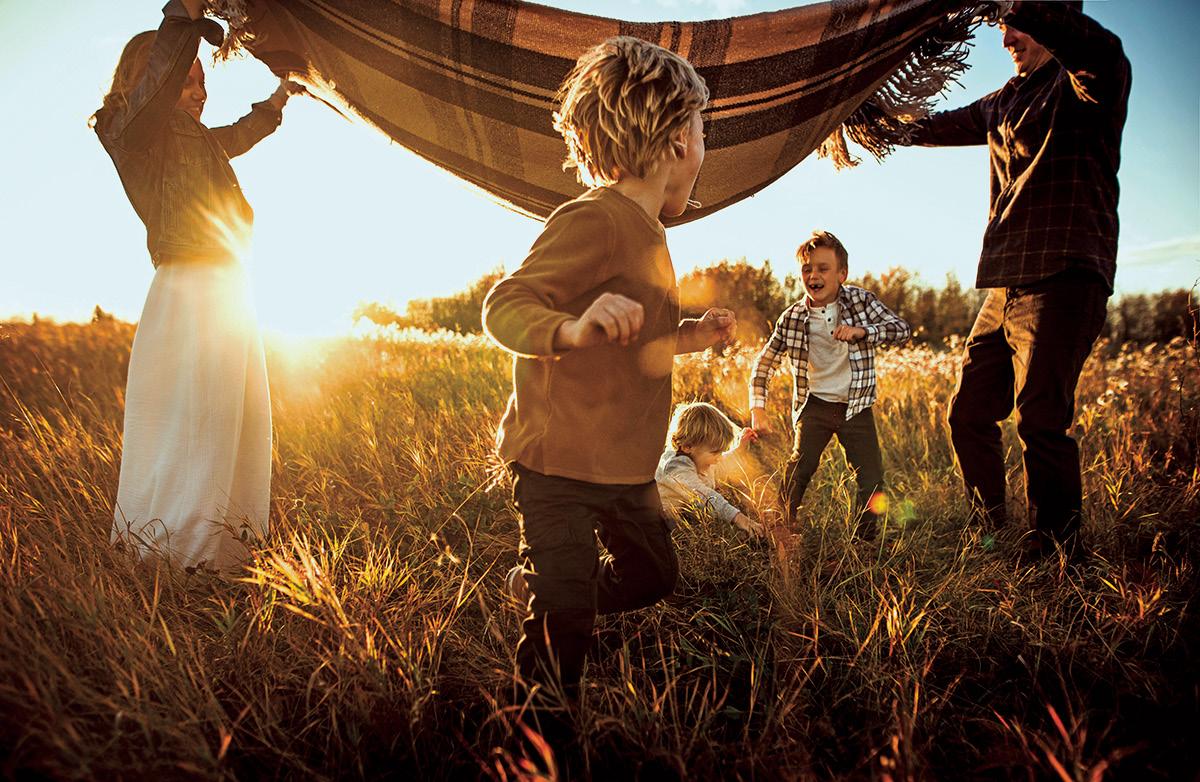
Some of you may have been told after experiencing rejection that there are “plenty of fish in the sea!” and while we may believe this to be true, shifting the focus from what they’re currently feeling minimizes and dis misses a really difficult time in their life. Try to stay with them in their feelings and remind them it’s natural and okay to feel all the things they’re feeling. While we’re all waiting for time to do what the cliché says it will, ask your youth how you can support them through? They may shrug their shoulders and tell you they don’t know or that that’s not a big deal but that act of asking lets them know you’re here with them and happy to follow their lead. Be sure to keep connecting with them in the event they need some extra support through the journey back from the heartache.
And finally, remind them that while you know it’s super hard for them right now, you’re also really impressed, inspired and proud that they were confident enough to take the risk to express their feelings, ask someone out and/or be in a relationship. This helps to remind them that while rejection does suck, they’ve still gained a lot from the experience and when it stops sucking, they’ll be left with something good!
As a mom of three, researcher and psychiatrist with a specialty in youth addictions. I’ve spent the last 20 years poring over the research on health, happiness, and motivation in children, especially teens. In the last decade I’ve added to that focus, the impact of screens on the developing mind.
I can assure you that, on the one hand, the science couldn’t be clearer. Rates of anxiety, depression, addiction, and loneliness have skyrocketed in the last decade, almost per fectly tracking the smartphone’s rise. Given the sharp declines in youth mental health, the American Academy of Pediatrics is now call ing for universal mental health screening at the age of 12.
Brain development suddenly accelerates during adolescence—at precisely the same time that screen immersion does. At that point, the brain’s “control centre,” hasn’t fully matured. It’s the part of the brain that asks us, Is this really a good idea? What are the longterm consequences? Meanwhile, young brains are wired and rewarded for risk taking, novelty seeking, peer admiration, and social connec tion. This intense developmental period of reward for risk, novelty, and admiration, com bined with undeveloped neurologic programs for long-term planning and appreciation of consequences, can make for a recipe of
confusion, hardship, and even devastation. In addition, the dizzying pace of new apps, plat forms, and devices coming onto the market makes it difficult, if not impossible, to provide our teens with timely advice.

Part of our job as parents and educators is to prepare our kids for the world they’re about to enter. To set them up for a lifetime of healthy eating habits, for example, we monitor their diets and help them understand the difference between good and bad foods. It’s time to begin doing the same thing with tech—that is, start young, and help kids un derstand the link between the tech they’re
consuming and how they think, feel, and behave. We need to teach them that brainboosting tech, just like brain-boosting foods, will lead to greater health and happiness. That toxic tech, including certain video games and social media platforms, can make them feel sad and anxious. And that a little bit of sugary junk tech, whether it’s a video game or a silly TV show, won’t hurt. However, just like sugar, too much will hurt.
Here, from The Tech Solution, is a visual of what a healthy tech diet can look like.
Now that we know where we need to get to, how do we get there? Well, it’s not by be ing a permissive “Jellyfish” parent with no limits, boundaries, or monitoring. It also not by being an authoritarian “Shark”, controlling, hovering and imposing. The only method that works is authoritative and collaborative “Dol phin Parenting.”
Dolphin parenting is about guiding rather than directing and encouraging rather than instructing. Dolphin parents teach their children by modelling good behaviour. My favourite example of this style is drawn from nature. When a dolphin calf is born its mother gently nudges her calf along to the surface of the ocean, where it can take its first breath. Rather than lifting her young to the surface, she models swimming for it. For the first sev eral months the dolphin mom guides, models, and instructs when needed, all while staying close to her calf, rarely leaving its side. This present, guiding, “firm yet flexible” style is the core feature of authoritative parenting.
Dolphin parenting is even more effective because it also emphasizes the importance of a balanced lifestyle, focusing on the P.O.D. –Play/exploration, Others/social bonding, and Downtime/self-care. This is why I consider the terms dolphin parenting, balanced parenting, and intuitive parenting to be interchangeable. The goals are the same: nurturing curious, confident, connected, adaptable, and resil ient kids through a balanced lifestyle and the dolphin parenting behaviours of bonding, role modelling, and guiding.
There is no doubt the world has changed and our children’s future is both exciting and un-predictable. In our fast-paced, everchanging, globally connected, and ultracompetitive world; the “future-ready” skills are resilience, collaboration, and innovation. If we guide our children to remember their daily dose of play, others, and downtime and consume a healthy tech diet, they are well on their way!
Dr. Shimi Kang is an award-winning psy chiatrist, researcher and best-selling author of The Dol phin Parent and The Tech Solution. She is also the founder of Future-ready Minds (dolphinkids.ca), co-founder of Get Sparky app (getsparky.ca) and host of the YouTube Show, Mental Wealth with Dr. Shimi Kang.



Join Canada's largest STEM Club for girls, nonbinary, and gender nonconforming youth ages 7 17.


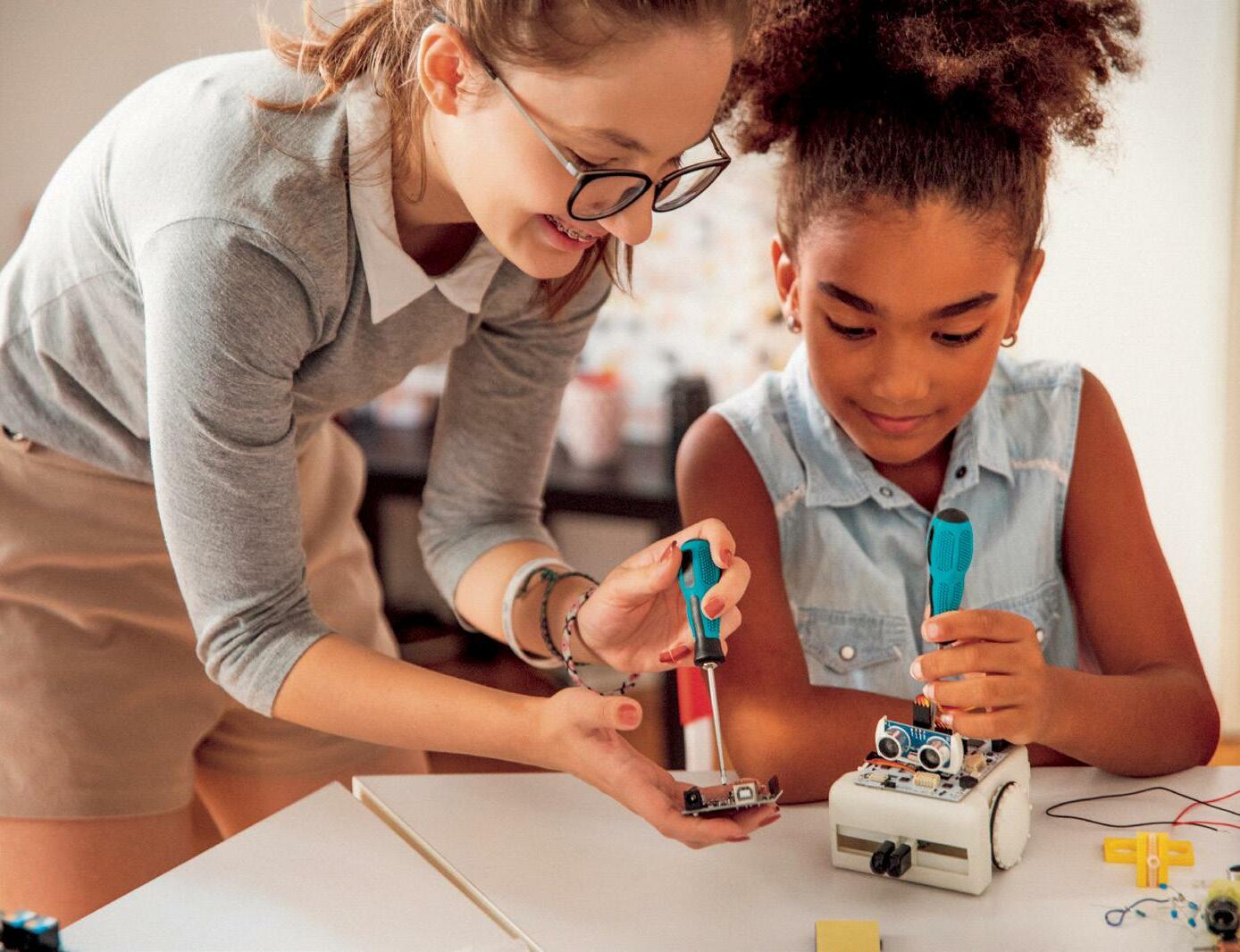

Creativity and creative expression often get dismissed as trivial and impracti cal. However, creative perspective is an invaluable tool that can help kids navigate obstacles along life’s trajectories all while promoting contentment in self and place. The concept of feeling satisfied and content in the most common and minimal of moments, like creativity, is often undervalued.
Creativity and creative play are intertwined with post-natal brain development; teach ing children to think creatively and problem solve using their imagination—whether that be learning to pick up a spoon by first learning to pick up a building block or figuring out mis chievous ways to summit the gated staircase— children learn through a creative lens.
A child’s resourcefulness and inventiveness is first imagined before it is realized—this in and of itself is a creative process. We teach children to learn to comprehend and commu nicate by creative means.
As children grow older, the onus flips to rigid and logical problem solving—sensible, well thought-out, tried-and-tested solutions. While logical course of action has its place, wielding this position consistently can be damaging to brain development as well as socialization and overall wellness. Creative expression should not be something we box away after early childhood. It should continue to be explored into adolescence and adulthood.
Creativity in its expression is a form of communication and there is a longlist of benefits to harnessing it in young adults and teens. Here are three examples:
1. Creativity inspires individuality.
Creativity promotes expression. Expression is proven to be paramount to our sense of well-being and place.

Creativity inspires individuality and encour ages self-reflection. It also helps to form a secure sense of self and by extension selfworth – the ingredients for healthy growth and endurance. It enables us to explore and discover the many layers of capacity and emotion that lie within us that otherwise may never surface. Expression also acts as a ve hicle for release. It creates the opportunity to let go of emotional, mental and even physical barriers and pressures.
2. Creativity boosts self esteem and reduces distraction.
Creativity helps boost the body’s endor phins. Increased dopamine levels generate a natural sense of optimism and positivity in the brain. This not only contributes to overall improved health but increased self-esteem and a fulfilled sense of place and being. Stud ies show that drawing, painting or molding objects from clay can help people to deal with different kinds of trauma.
Creativity is joyful and fun! When some thing is interesting and fun it is so much eas ier to digest than something that is mundane and dull. This POV can be used to reduce pro crastination and curtail distraction. Creativity aids in the unlocking of routine and mundane perspectives. It offers us the ability to see something that may seem dull and mundane, as interesting and fun.
3. Creativity champions earned rewards over instant gratification.
Being creative requires time, effort, atten tion to detail, care, belief and determination. The investment of time, effort, attention to detail, care, belief and determination means that your senses and motor functions are stimulated and activated. You are invested. You have something to lose and something to gain. You care. When you care and work for
something, the reward is so much more grati fying than instant gratification.
Creativity fortifies contentment in self and place, helps to traverse practicalities and overcome limitations. It fosters understand ing, discipline, learning, interpersonal rela tions and growth. It sheds light on the banal and amplifies the extraordinary.
Creative communication is not something that should be limited to associations with early childhood, theatre, idiosyncrasy and/or eccentricity. We all have the aptitude for cre ativity and creative expression.
As parents or guardians, we should nurture and encourage divergence and experimental thinking. The list of creative outlets and as sociated benefits are endless. Fashion, music, sculpture, photography, parkour, comedy, fine art, design, floriculture, woodwork, let ter writing, scrapbooking, cooking, antiquing, coffee roasting. I could go on but you get the idea—get creative!
Laura Noonan is an artist, writer and curator from Ireland now living in Vancouver. She is the owner and operator of LKN Design Press, specialising in creative direction, partnerships and events.



